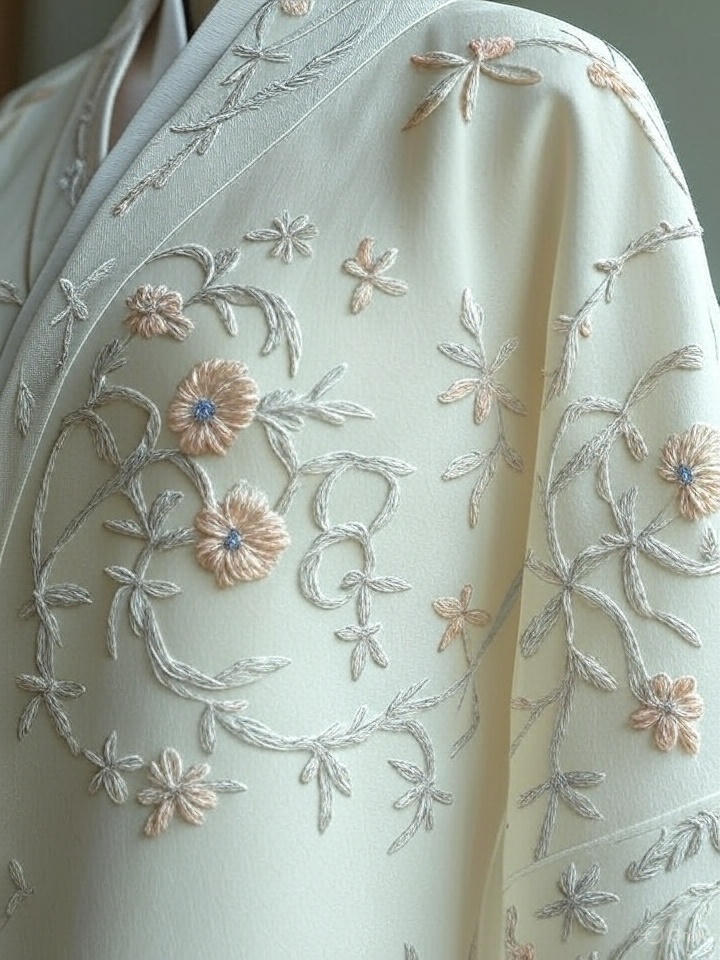
As consumers start to question where their clothes come from and how they’re made, traditional fashion is gaining renewed attention. Chinese dressmaking, rich in history and artistry, stands out as a cultural beacon. But can this heritage craft embrace sustainability without losing its identity?
Textile waste contributes over 92 million tons to global landfills each year.
Many modern artisans and boutique owners believe it can. Brands that focus on traditional clothing are beginning to rethink their materials, production processes, and values. For example, French-based boutique Robe Traditionnelle Chinoise highlights how cultural preservation can align with ethical fashion. By choosing biodegradable fabrics and working with small-scale artisans, such businesses offer a low-impact alternative to fast fashion.
Understanding the Environmental Cost of Traditional Dressmaking
Silk, the heart of many Chinese garments, has both pros and cons. Although it’s a natural and biodegradable fiber, the way it’s produced can be resource-intensive. Silk farming involves large amounts of water, and conventional dyeing techniques can pollute water systems. Hand embroidery and dyeing often require fewer chemicals, but mass-produced versions cut corners to meet demand quickly.
On top of that, energy use during manufacturing adds to the carbon footprint. From hand-looming to tailoring, traditional fashion demands more labor but usually produces fewer pieces. This slower process means fewer carbon emissions compared to industrial garment factories. Still, without ethical standards, small workshops can exploit labor and ignore eco-friendly practices.
Slow Fashion vs. Fast Fashion
Fast fashion thrives on speed and quantity, while slow fashion values quality and purpose. Traditional Chinese garments are often created with detailed craftsmanship. Slow fashion embraces this method, reducing the pressure on natural resources and supporting local artisans. It also extends the garment’s life, encouraging consumers to buy less and choose better.
By investing in a single well-made piece, consumers shift from disposable trends to timeless elegance. This mindset echoes Confucian ideals of harmony and balance—principles embedded in traditional Chinese aesthetics. When sustainability meets heritage, it strengthens both cultural preservation and eco-awareness.
Ethical Sourcing and Eco-Friendly Materials
The materials used in traditional dressmaking matter more than ever. Organic silk and bamboo fabric are now being used as sustainable alternatives. These fabrics are not just kinder to the environment but also healthier for the skin. Some brands are even using plant-based dyes to avoid toxic waste.
Ethical sourcing means working with artisans who are paid fairly and work in safe environments. When boutiques engage directly with local weavers and seamstresses, they support rural economies while ensuring transparency. It’s not just about the final garment. It’s about the journey it took to get there.
Learn more about ethical fashion, read also Embracing Ethical Fashion and Sustainable Living.
How Boutiques Like Robes Chinoises Are Leading Change
Robes Chinoises bridges the gap between tradition and sustainability. Their collections are inspired by the qipao and hanfu but use low-impact fabrics and ethical practices. They don’t mass-produce. Instead, they create limited runs, reducing waste and avoiding overproduction.
The boutique also educates its audience about the craftsmanship behind each dress. This story-telling approach builds a connection between buyer and maker, promoting conscious fashion decisions. It reminds people that every stitch has meaning and every choice matters.
How Consumers Can Help
Making fashion more sustainable isn’t only the designer’s job. Consumers have power too. Choosing traditional pieces from ethical brands is one step. So is taking care of garments properly, re-wearing them proudly, and supporting businesses that value sustainability.
- Buy less, choose better: Avoid overconsumption.
- Support local makers: Look for small labels with transparent sourcing.
- Care for your clothes: Hand-wash, air dry, and store garments well.
Looking Ahead
Fashion rooted in heritage doesn’t need to harm the planet. It can inspire change. Traditional Chinese dressmaking, when approached mindfully, offers a blueprint for a more sustainable future. Through conscious materials, fair labor, and respect for the craft, the fashion industry can move toward a model that celebrates both people and the planet.
By weaving culture into eco-awareness, we don’t lose tradition—we make it stronger.

